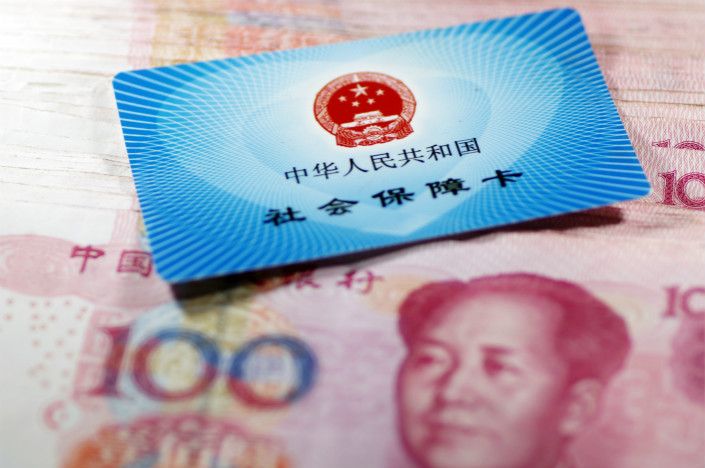Social Security Fund to Become More Market-Driven, Chief Says

* Social Security Fund had more than $316 billion in assets at the end of 2016
* Fund head says current managerial mechanism not appropriate for investment body
The proposed government revamp plan will make the management of China’s national social security fund more market-driven and boost investment returns, the head of the fund’s management group said.
Lou Jiwei, sitting head of the National Council for Social Security Fund (SSF) and an outspoken senior official who previously served as finance minister, said the institution will be managed in a more market-oriented way after it gets merged into the Ministry of Finance. The SSF is currently affiliated with the State Council, China’s cabinet.
The SSF’s current managerial mechanism is not appropriate for an investment body, Lou said, adding that “investment is a market-orientated activity, unlike government activities, which can be planned.”
The reorganization is expected to enable the SSF to improve cost controls and streamline decision-making and thereby boost returns, Lou said.
The reorganization is part of an ambitious plan to revamp the central government, with the goal of cutting red tape and boosting government efficiency.
Under the draft plan, new ministries will be created while some bureaucracies will be disbanded. The most eye-catching proposed change is the merger of the banking and insurance regulatory bodies into one entity, which will be tasked with overseeing both industries, and the transfer of their regulatory drafting responsibilities to the central bank, a development that will enhance the power of the monetary authority.
Bolstered by the central government’s fiscal support and state-owned enterprises’ capital, the SSF was founded in 2000 to cope with a potential pension deficit as China hurtled toward an aging society.
The SSF’s funding sources and managerial structure are different from national social security programs such as pension and medical care, which are controlled by the provincial governments. Those programs covered more than 900 million people at the end of last year.
The scale and speed of China’s aging is unprecedented in the world, Zheng Gongcheng, member of the committee for internal and judicial affairs of the National People’s Congress, the country’s top legislature, said at a press conference earlier this week on the sidelines of the ongoing legislative meeting.
By the end of 2017, there were 240 million Chinese nationals over the age of 60, accounting for 17.3% of the total population of 1.4 billion, up from 10% in 1990, Zheng said.
The SSF has ventured into riskier territory such as the stock and bond markets in exchange for greater gains. By the end of 2016, it had total assets worth more than 2 trillion yuan ($316 billion) and notched up 31.9 billion in annual profits, official figures showed. The SSF’s average annual return rate has been 8.37% since 2000, much higher than the official inflation rate.
Contact reporter Pan Che (chepan@caixin.com)

- 1China Moves to Tighten Air-Quality Standards as Beijing Reports Best-Ever Skies
- 2China Threatens EU After Carbon Border Tax Takes Effect
- 3Gansu Ex-Vice Governor Jailed 15 Years for Bribery, Insider Trading
- 4Cover Story: How Resource Nationalism Is Redrawing the Global Mineral Playbook
- 5 Exclusive: Wingtech Chair Vows to Regain Control of Nexperia After 100-Day Standoff
- 1Power To The People: Pintec Serves A Booming Consumer Class
- 2Largest hotel group in Europe accepts UnionPay
- 3UnionPay mobile QuickPass debuts in Hong Kong
- 4UnionPay International launches premium catering privilege U Dining Collection
- 5UnionPay International’s U Plan has covered over 1600 stores overseas






